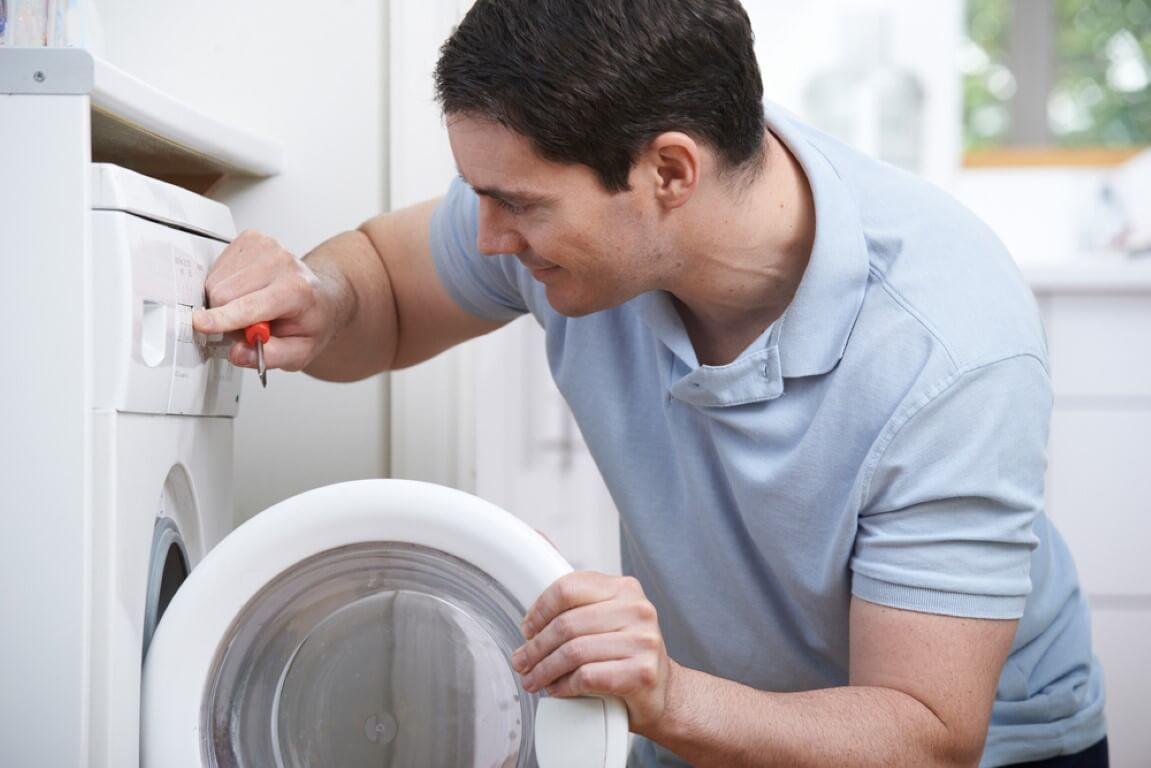
Your washer is one of the most important appliances in your home and, without it, doing laundry will take a lot more time and effort. One way or another, we all experience some common washer issues. When your washer breaks down, it’s most likely that one of the following five faults are to blame.
If you try to turn your washer on and it does not respond, there could be a few things to blame. The first thing you need to do is check your fuses and power supply. You can test the plug by using a small appliance. For example, you could plug in a hairdryer to test the plug. In case the power supply isn’t the problem, it could be an overheated motor. In this case, your washer might need to cool down before it will turn on again. If your washer stops mid cycle, your washer could be on a pause cycle or the lid (or door) could be open. If your washer has an electronic control panel, any faults in this panel can result in the washer not turning on. In some cases, the panel might need to be replaced before you can use your washer again.
One of the most frequent washer issues is the spinning cycle. The most common reason for this washer issue is a faulty door or lid. Washer doors and lids have sensors that indicate if they are properly shut. If the door is not shut or if the sensor is faulty, the washer will not spin. Another common cause is a broken or stuck water level control switch. If you can hear the washer making a noise even though it’s full, there might be something stuck in the drain pump. Alternatively, there could be a problem with the main drive motor or any one of the mechanisms responsible for the spin function. Whether your washer is not spinning or you notice that it’s not spinning quite as quickly as it should, you should call a professional repair technician right away.
If your washer fills with water but does not drain, there are a number of possible causes. Start by checking the drain hose for any kinks that could be blocking water from draining. You could also check the lint filter. If the drain hose is blocked, this will also present a problem for obvious reasons. If there are no obvious blockages, your pump could be to blame. On some occasions, the washer transmission gears could be worn. When it comes to such complex issues, it’s best to have a professional look into it.
Diagnosing a washer leak is all about finding out when exactly the water leaks. For example, if your washer leaks during the spin cycle, it’s usually a leaky drain hose. It’s also important to take note of how hard or soft your water is. The softer your water, the less detergent you will need. Hot water also requires less detergent. For front loaders, worn or broken door seals can result in leaks. You should also clean this part of your machine regularly to prevent dirt from building up. Check your fill hoses and make sure that all hoses are intact and properly connected. Clamps and hoses need replacing from time to time due to normal wear and tear. Alternatively, pump leaks and tub leaks are usually as a result of wear and tear as well as the tub seal.
One of the most common washer issues are unusual noises that you haven’t heard before. There are a few reasons for your washer making strange noises or vibrations. The first one could be water damaged tub bearings. The cause of such damage is quite possibly a bad seal that should be replaced. On the other hand, the reason could be much more simple. It just may be that your washer isn’t sitting on level ground. You want to make sure that your washer is completely level before you plug it in for any cycle. The vibrations can even make the washer move across the room, so it’s not uncommon for people to find their washer on the other end of the room during the cycle.
No matter the make or model of your washer, professional repairs are essential. An appliance repair expert can do your repairs quickly and you won’t have to worry about causing more damage.
Markham appliance repair, Scarborough appliance repair and Mississauga appliance repair.